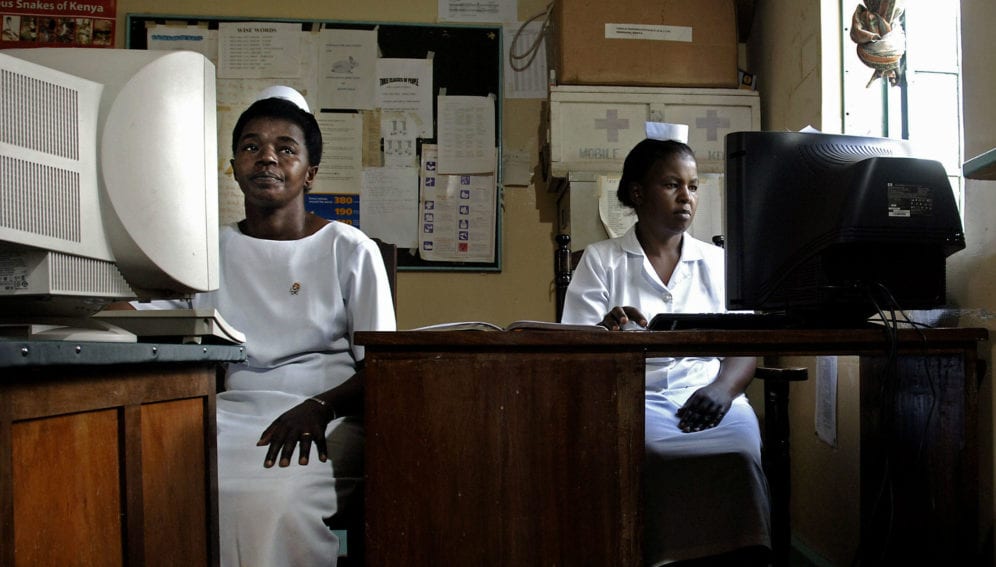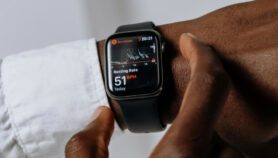By: Anita Makri
Send to a friend
The details you provide on this page will not be used to send unsolicited email, and will not be sold to a 3rd party. See privacy policy.
This article was supported by The Rockefeller Foundation Bellagio Center.
The pace of technological advancement in digital health – where smartphones and the internet are being used to personalise health services – is moving faster than policies to ensure people’s data is being protected, according to Patricia Mechael, co-founder of the non-profit organisation HealthEnabled.
“The technology is moving faster than policies to ensure that data ownership is clear,” says Mechael, who while at the Bellagio Center in 2015 worked on the Global Digital Health Index, an interactive tool designed to monitor and evaluate digital health at a country level. The Index was launched during the World Health Assembly in May this year.
As part of the Bellagio Residency 2018 series, Mechael tells SciDev.Net about the shift towards integrating electronic health systems and mobile health applications, and using them at scale safely and sustainably.
What can we expect to see in how digital health tools are used by community health workers in the next 10-20 years?
What we've seen traditionally has been a real focus on health system strengthening and using technology for health information systems, disease surveillance. Increasingly, because of universal health coverage, it's being used for health insurance. Then in parallel, there have been a number of support tools for health professionals and health workers. We've had tools to support everything from decision support for community health workers, mobile telemedicine, and community case management – so registering and tracking of individuals, and then linking them to health services in a clinic. But a lot of that work has largely happened in isolation of the larger health system. Now what we're seeing are some really exciting developments of bringing those two pieces together.
What’s an example of this?
A really good example is the MomConnect programme in South Africa, which started as a resource to provide messages to women during their pregnancies, as well as through to the first year of [the baby’s] life. People were largely happy with the services they were receiving. But then there was this request by the nurses to say, is there a set of support tools for the nursing staff providing the services ‒ and is there a way to connect these women into services and track them more systematically? There's now a suite of tools developed that are highly integrated with each other.
So what used to be highly centralized is moving more towards decentralization, and it's being connected. We're also starting to see individuals accessing different tools to support their own health as well as interact with the system.
How widely is that happening beyond MomConnect, which your organisation is involved in?
The [South African] National Department of Health [has] been leading this effort, and we've been supporting them. But there is a fair amount of activity that's happening throughout the world to move in this direction. Before, a lot of it was highly siloed ‒ so you had no direct-to-client, direct-to-health worker, [or] health system activities happening. I think the shift that we've seen in the last few years is the connecting of the dots – bringing these things together.
Is that integration promoted on the policy level, or is it driven by technology developers?
I think it's mostly being driven on the policy level. There's very little incentive [for technologists]. Unless somebody decides that they want to see two tools interact or integrate with each other, there's very little motivation for me to design it in such a way. Because you lose some of the ownership over what you are doing.
What we've seen on the policy level, which I think is very exciting, is a lot of countries putting into place their enterprise architectures and adopting things like open health information exchange approaches that facilitate or guide the integration, even sometimes mandate integration of some of these tools.
What's the motivation for countries to require that integration?
I think there is recognition that there are a lot of tools out there being used, and that if they're not integrated then governments can't really benefit from the data that's being captured. The governments also acknowledge that they can't implement everything; they can't be everywhere all the time. More and more you're starting to see [them] focusing on the standards, architectures and policies, and then requiring that the different players ‒ whether they're on the public sector side or on the private sector side ‒ are plugging into these standards and architectures.
Do you see a downside to setting up these systems?
Absolutely. One of the areas I've been very active in [is] the ethical considerations when designing and deploying technology. Are we exacerbating inequity? There are still segments of the population that just do not have access to a phone; and by digitizing, are we leaving people behind? We have to account for that in the design. The gender lens is important as well. Women are 20% less likely to own a phone than men. Most of the programs that are implemented in digital health focus on maternal, newborn and child health, but we don't have a lot of female technology developers and programmers. Also on the policy side: women are not very likely to be involved in the policy-making related to the use of technology on women and children's health.
Does the responsibility to look at these issues rest with governments themselves?
It is – and I think that's one of the reasons the [Global Digital Health] index was an important resource. One of the biggest gap areas we have seen in countries is around privacy policies – that privacy policies are not keeping pace with the use of technology. Many ministries of health recognise this as a challenge, and they're trying to work their way through it.
Are there other areas that need attention?
Oftentimes we focus quite heavily on apps and applications that can be used by community health workers – whether on cell phones or on tablets – but some of the most effective tools and resources that I've seen implemented have been things as simple as creating closed user groups, where networks of health workers can communicate and support each other. A lot of times I think we rush to the new shiny object in the app space, but don't think enough about even just the ability to communicate via voice through mobile phones. I think that's an important part of the picture that often gets neglected.
This interview has been edited for brevity and clarity.
This article was supported by The Rockefeller Foundation Bellagio Center. For nearly 60 years the Bellagio Center has supported individuals working to improve the lives of poor and vulnerable people globally through its conference and residency programs, and has served as a catalyst for transformative ideas, initiatives, and collaborations.
From November 5 – December 3, 2018, the Bellagio Center hosted a special thematic residency on Science for Development, with a cohort of up to 15 scholars, practitioners, and artists whose work is advancing, informing, communicating, or is inspired by the use or design of science and technology to address social and environmental challenges around the world.














